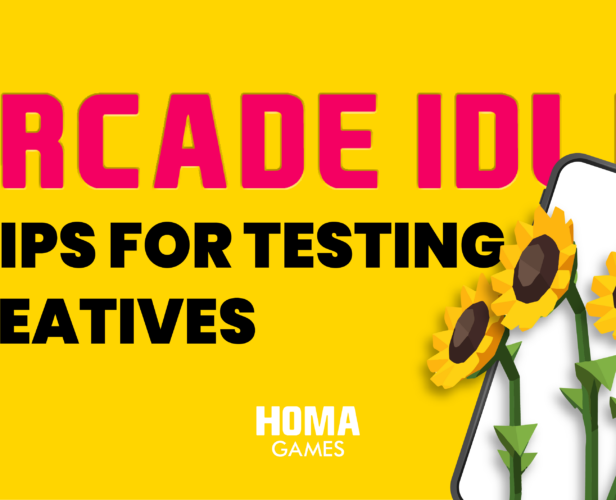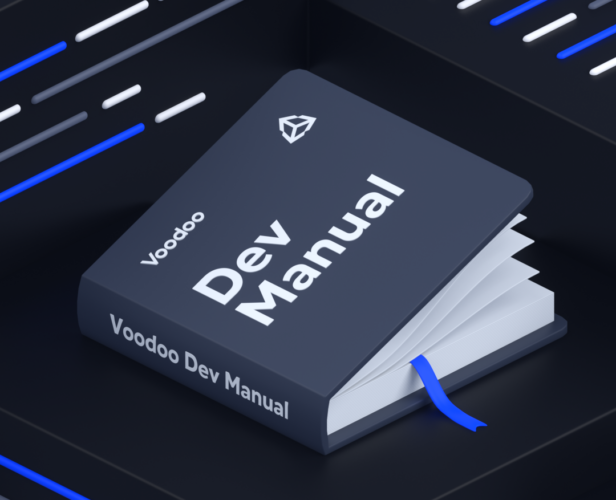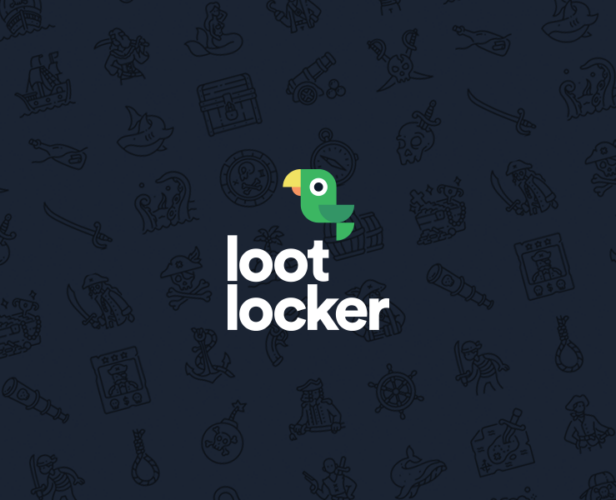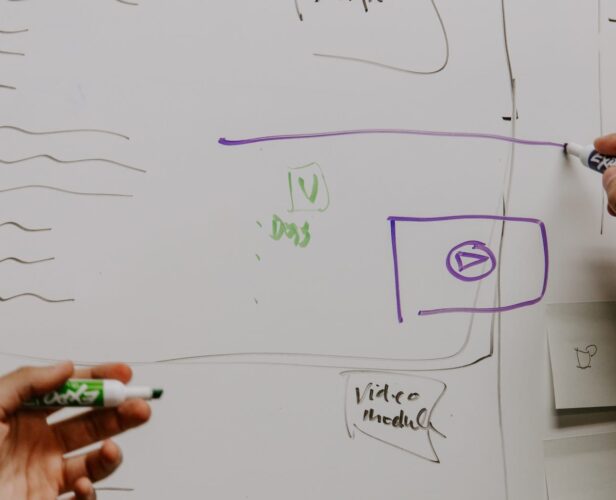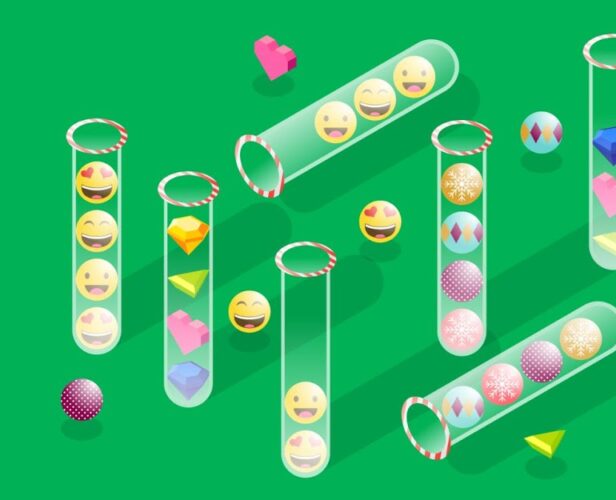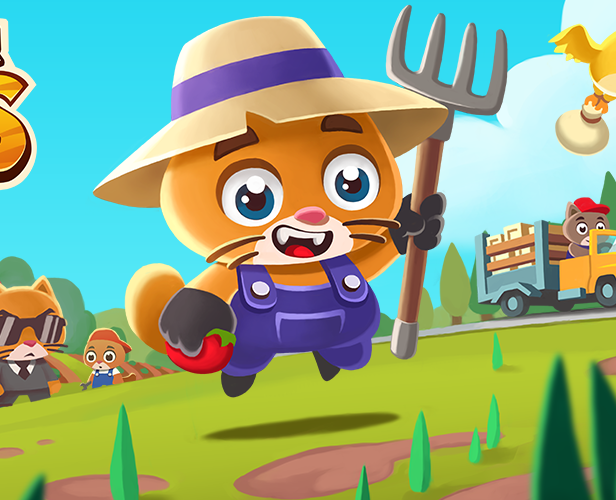Category
Strategies
#Ads & Monetization
Arcade Idle: 5 Tips for Testing Creatives
For everyone creating Hypercasual games, prototyping and testing is a crucial part of the process. It allows developers to save time, to avoid over-investing, and to be able to iterate accordingly. In addition to testing the gameplay and mechanics, an important part of the process is to evaluate a game’s marketability. And that’s where creatives come in handy. Creatives are the ads used in a user acquisition strategy to drive installs and, as the first touchpoint with most of the players, they can have a huge impact on the success of a game. In short, the goal of a creative is to give a good idea of a game and to make players want to play it. Testing with creatives is the best way to rapidly assess the potential of a new product no matter the type of game. But...
#Game Design
Simple Tips to Increase Efficiency in Hyper-Casual Game Development
Editor’s note: This article was originally published by our friends at Voodoo. You can check out the original article here. How long have you been working in Unity? Are there simple changes that you could make to your work process to get the most out of your iterations? Whether you’re super experienced or just starting out in hyper-casual game development, taking the time to review your processes can be key to staying efficient and producing great results. A team of our in-house Game Developers recently got together to discuss best practices when working on Unity game prototypes. The result? The Voodoo Dev Manual. Filled with simple tips and tricks to help you work as efficiently as possible and speed up your iterations, this brand new resource is now available for all partner studios on our exclusive e-learning platform . The Voodoo Dev Manual...
#Live Ops
What to Expect When Your Game Turns Into a Viral Hit
Every game developer hopes to see their game hit the top of the charts. The thrill of seeing people play it on the train, glowing reviews in gaming outlets, and your own section on Twitch. (The increased revenue doesn’t hurt, either.) But nobody really prepares you for success. What happens when you get that surge of new players and become so popular that even non-gamers have heard about you? With great success comes great responsibility. The more players you have, the more pressure you’re under to improve the game, add new content, fix bugs and keep the game alive. It’s a tough gig and one game can easily turn into an entire career. And there are quite a few tasks you’ll need to take care of behind the scenes. What goes on behind the scenes? This isn’t an exhaustive list,...
#Guides
Developers Assemble – How to Find and Hire a Game Dev Team
Think of your potential team like the Avengers, but with less spandex (although that’s completely up to you). You need a mix of specific skills and people who get on well as you’re likely to be working together very closely, for some time. And you’re also going to be paying them, so you need to make sure they understand your vision and how you want to deliver it. Don’t worry, help is at hand – here’s our advice on how to find the very best game development superheroes. Before you start recruiting The first thing you’ll need to think about is the type of game you’re building. Ask yourself the following four questions: 1. What technology does my game need? This will give you an idea of what you need to look for when it comes to technical expertise in...
#Marketing & Publishing
7 Deadly Messaging Sins in Mobile Games (And How to Solve Them)
Editor’s note: This article was originally published by the crew at OneSignal. Check out the original article here. You know how powerful player messaging can be. It can improve a game’s experience and enrich competition. It can engage new gamers and win back churned players. Although the potential benefits are compelling, there are also examples of messaging channels detracting from the game experience. As a result, many savvy game developers overlook opportunities to enhance their game experience with messaging because they’re afraid of what might go wrong. Getting mobile messaging right takes some skill and thoughtfulness. We pooled our collective knowledge, along with input from leading mobile development studios, to create a list of seven common messaging mistakes in the gaming industry and how you can avoid them. Sin #1: Leading With an Opt-in Request Imagine you’re a bored commuter. You head...
#Game Deconstructions
How Game Worthy Hit a 66-Minute Average Playtime With City Takeover
Editors note: This article was written by the publishing team at Voodoo. You can check out the original version here. How do you take a strategy-based, connect & conquer style game, and transform it into a successful hyper-casual hit? Game Worthy, a Vancouver-based studio composed of programmer Kaue and game artist Fred, managed to do just this with their latest game, City Takeover. Hitting outstanding KPIs and entering the top 100 iOS US immediately upon its release, this game is nonetheless very different from other games in the genre. It demands a bit more thought, concentration, and strategy… in other words, it’s more difficult than your typical hyper-casual game. Read on to find out how Game Worthy, teaming up with Voodoo, managed to transform one of their favorite childhood games into a hyper-casual hit. Ideation & inspiration Here at Voodoo, we...
#Guides
Picking a Backend – Why It’s Vital, and How to Pick One
That’s a fairly obvious statement. Lavish visuals and meticulous game design are nothing without the likes of quality code and robust AI. But there’s another layer that sits behind everything else that’s equally important – particularly in the era of games as live entities. Simply put, you absolutely need a quality backend for any connected game to thrive. That’s true whether you have online multiplayer to consider, a connected user community to serve, or the likes of seasonal events and updates to consider. Equally, an intuitive backend can both accelerate and optimize your game development workflows, making the likes of achievements and social integration, leaderboard implementation, or in-game currency creation a trivial task. If any of those factors are part of your game, a backend is arguably as important as your chosen engine. Can I make my own backend? It...
#Strategies
5 Techniques to Supercharge Your Ideation
Editor’s note: This article was originally written by Sara De Vries, Content Creator at Coda Games. You can find the original here. In hyper-casual gaming, coming up with the next hit game idea can be one of the most challenging parts of game development. Choosing the right game idea is crucial to avoid losing time and money spent building an unsuccessful game. So what exactly is the best method for game ideation in hyper-casual and how can you start implementing it today? Luckily, we sat down with our gaming experts here at Coda to understand the best methods developers can utilize in the initial ideation phase to help increase their chances of success in publishing. 1. Monitor Trends One misconception when it comes to game ideation in hyper-casual is that your game idea needs to be entirely brand new. This...
#Guides
Access All Areas: How to Make Your Game More Accessible
As developers, accessibility is often one of the last things we think about – that’s if we think about it at all. Which is a shame, because we could be alienating a huge group of players. The good news is that making a mobile game more accessible really isn’t difficult. Hang on – what’s accessibility? Before we get into the details, let’s talk about what accessibility actually means for developers. It’s about designing apps that all people can easily use, regardless of whether or not they have a disability. So that’s things like including subtitles for the deaf or hard of hearing, or adding options for people who are visually or cognitively impaired (among other things). Simple, right? And when you look at it like this, it’s a bit of a no-brainer. Why wouldn’t you want the widest range of people...
#Data & Analytics
How to Improve Your Game KPIs and Boost Revenue – Lessons From Bubble Sort
Editor’s note: This article was originally published by Kinsey Dardanus, publishing expert at TapNation. You can find their version here. Bubble Sort is a worldwide leading puzzle-game, on both Android and iOS, totaling more than 15 million players across the world. We originally launched this game on December 19th 2019, and since then we’ve been at the top for a whole month. But what’s the secret sauce behind this game’s success? The short answer: deep player behavior analysis, and lots of level difficulty improvements. But there’s much more to it than just that. At TapNation, our data scientists and engineers have developed tools and algorithms to monitor, analyze and test our gameplay and difficulty curves in order to improve our KPIs. And in this blog, we’ll give you a sneak peek behind the curtain, and share some of the techniques...
#Data & Analytics
Making Better Game Decisions with Feedback Testing
You might be familiar with the concept of split testing. Also known as A/B testing, split testing compares different versions of your assets to see how each performs with your players. At the conclusion of your test, you adopt the variant that showed the best response. Split testing is a critical part of the game development process. It’s pretty much baked into any user acquisition campaign, with ad creatives and app store assets quick and easy to A/B test. But a traditional split test’s quantitative data can only tell you so much. And this kind of testing is only possible once the game is up and running. That’s why feedback testing is so important. It provides qualitative data to show you the why behind what is and isn’t working. What is feedback testing? Feedback testing is essentially surveying players to...
#Guides
Making a Hyper-Casual Game? Here’s 5 Common Mistakes to Avoid
Editors note: This article was originally crafted by Sarah D. Vries, Content Creator at Coda Game. You can find the original piece here. The hyper-casual gaming industry is constantly evolving, requiring developers to be on top of trends and the latest gaming practices to remain competitive. Like honing any craft, it’s a constant work in progress and many studios often end up making common mistakes that can easily be avoided. Thankfully at Coda, we’ve had extensive experience working with developers and studios of all sizes. From our experience, we’ve compiled a list of the top five common mistakes that hyper-casual developers make and how best to avoid them when creating your next game. 1. Getting the difficulty of levels wrong Hyper-casual games are known for their simple nature and the ability for gamers of any level to play. One common...
#Marketing & Publishing
How to Keep Players Engaged and Coming Back to Your Idle Game
Idle games don’t involve much in the way of thinking from the player. And they don’t have an end goal – you just continue to play them, earning more in-game currency and upgrading as you go. They’re usually free to play, relying on in-app purchases and currency passes to make money. But how can you make sure that your players want to keep coming back? In this blog we’re going to tell you how to do just that, and also share some stats on engagement metrics. Why idle games appeal to both players and developers On paper, idle games sound a bit ridiculous. Why would anyone want to play a game that involves hardly any, well, playing? The numbers say different though – idle games have really high retention rates, and users keep coming back, even when they’ve been playing...
